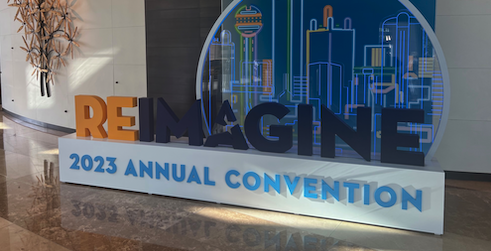Place marketing leaders from across the U.S., Canada, and the world came together July 18 – 20 for knowledge exchange and professional networking in Dallas, Texas at the Destinations International Annual Convention. The timely theme of “Reimagine” highlights the reexamination of the role a DMO now plays within its community, finding perfect harmony between attracting visitors, managing long-term sustainability of its visitor economy and developing a meaningful relationship with residents.
Here are five takeaways from TURNER Senior Vice President Malcolm Griffiths:
- DMOs are becoming stewards of their community
In overcoming crises, from the COVID-19 pandemic to gun violence, overtourism to battling climate change, DMOs have been thrust into a stewardship position to sustainably manage their visitor economy for the future. DMOs, like New Zealand’s Bay of Plenty, are now focused on long-term planning that considers social, cultural, economic and environmental factors as well as both supply and demand. The Hawaii Tourist Authority has adopted a regenerative tourism approach to ensure benefits are experienced by both the host community as well as visitors, protecting the environment in the process. Collaborating with a diverse range of stakeholders – residents, businesses, government agencies and non-profit organizations ensures comprehensive tourism management plans are developed and implemented.
- Increased focus on local community engagement
As a subpoint from the above takeaway, DMOs need to engage more with all sectors of the destination they represent, particularly those at the city level. Many have traditionally been seen as just a source of funding for their community through grant programs, but there is an increased need to show more value as a resource for tools and information, as well as be a local partner and ally. The Nashville Convention and Visitors Corp.’s (CVC) ongoing engagement with its city’s Police Department ensured joint advocacy with the Tennessee State Legislature after the tragic Covenant School shooting. DMOs can connect with their resident’s “Love of Place,” as shared in a Bay of Plenty, New Zealand case study, to highlight the relevance, credibility, partnership, and value the organization brings to the community. And it is public relations that play a key role in DMOs for this community outreach, telling their organization’s stories and the value it and tourism bring to the places they are responsible for.
- The continued convergence of Economic Development and the Visitor Economy
Place marketing has long been the bastion for DMOs within their community. However, as the role of destination management becomes more important, DMOs are intersecting more with their economic development counterparts through talent attraction, joint place branding, and building a diverse workforce within their communities. As an example, Chattanooga Tourism Company and Visit Baltimore highlighted their efforts in helping workers enter and stay in the tourism, hospitality and local music industries. Collaboration is vital for these two complementary entities.
- Sports Tourism is having a renaissance
The U.S. cohosting role of the FIFA Men’s World Cup in 2026 and Los Angeles again hosting the Summer Olympics and Paralympics in 2028, highlights the important role sports can play within a visitor economy. Representatives from Destination Vancouver, VisitKC, and the Dallas Sports Commission pulled back the curtain on what it takes for a destination to win a host city bid for a hallmark sport event such as the largest men’s soccer tournament in the world. CEO of the Dallas Mavericks, Cynt Marshall, also shared her perspective on how integrated her basketball team is within her community and its valued tourism offering for the city. Sports are an important part of the marketing mix for destinations of all sizes.
- Accessible Travel: the next frontier in DEI for destinations
It was clear that diversity and inclusion in all its forms matter, with race, gender and sexual identity representation a defining topic within communities, workforce development, retention, and career growth; DMO staff and leadership and visitor target marketing demographics. Now, many DMOs are assessing their ability to cater to visitors with disabilities, ensuring equal access and enjoyment to tourism products and experiences for all. 20 percent of the population identify as a Person with Disabilities (PwD) – be it cognitive, hearing, vision, or mobility related. This large cross-section of society offers prepared destinations the ability to attract a customer that is loyal and visits repeatedly, stays longer, spends more, often traveling off-season and/or mid-week. However, John Sage, CEO of Accessible Travel Solutions, made the poignant comment that those with an impairment only feel their disability while traveling when encountering barriers to their accessibility.
Malcolm Griffiths
:
August 21, 2023



